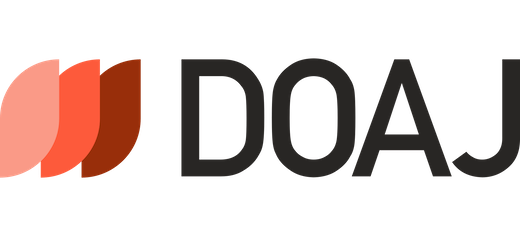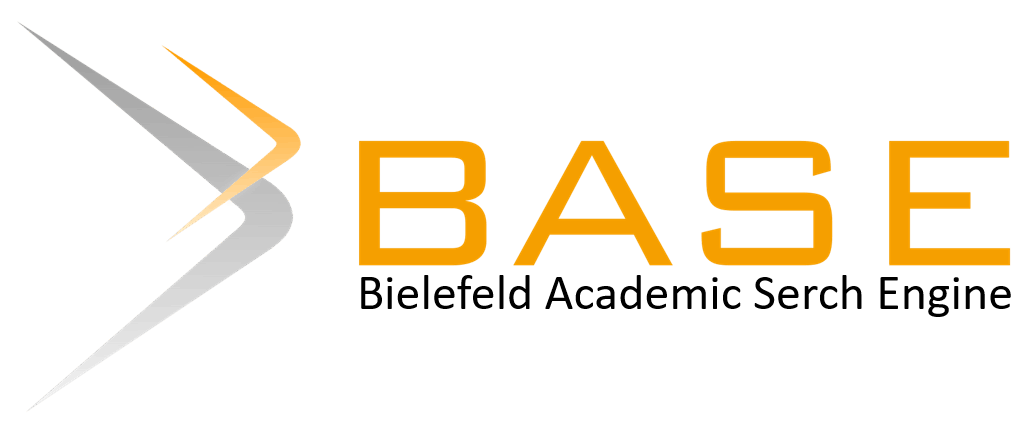A sustainable approach to learning: Enhancing creative thinking skills through creative problem solving in green schools
Abstract
This research aims to analyse the influence of the Creative Problem-Solving learning model on the creative thinking skills of class XII high school students. This research uses a quantitative approach with a quasi-experimental design, specifically the matched only pre-test post-test control group design. The population in this study consisted of 167 students. The research sample was obtained using the cluster random sampling technique, resulting in an experimental class of 34 students and a control class of 34 students. The instruments used were tests, questionnaires, observation sheets, and documentation. The collected data was analysed using the MANOVA test. The results show that the N-Gain value for creative thinking skills in the experimental class is higher than in the control class, specifically 0.58 > 0.36. Therefore, it can be concluded that there is a significant influence of using the Creative Problem-Solving learning model on improving the creative thinking skills of class XII high school students.
Keywords
Full Text:
PDFReferences
Adam, M., & Mujib, U. (2020). Students’ critical-creative thinking skill: A multivariate analysis of experiments and gender. International Journal of Cognitive Research in Science, Engineering and Education, 8(S), 49–58. https://doi.org/10.23947/2334-8496-2020-8-SI-49-58
Baró, F., Camacho, D. A., Pérez del Pulgar, C., Triguero-Mas, M., & Anguelovski, I. (2021). School greening: Right or privilege? Examining urban nature within and around primary schools through an equity lens. Landscape and Urban Planning, 208, 104019. https://doi.org/10.1016/j.landurbplan.2020.104019
Boca, G., & Saraçlı, S. (2019). Environmental education and students’ perception for sustainability. Sustainability, 11(6), 1553. https://doi.org/10.3390/su11061553
Costa-Silva, J., & Lee-Schoenfeld, V. (2024). Syntactically branching out beyond the traditional classroom: A report on the discovery method: Supplementary material. Language, 100(3), 99–123. https://doi.org/10.1353/lan.2024.a937756
Donoghue, T., Voytek, B., & Ellis, S. E. (2021). Teaching creative and practical data science at scale. Journal of Statistics and Data Science Education, 29(1), S27–S39. https://doi.org/10.1080/10691898.2020.1860725
Fathonah, S., Cahyono, E., Haryani, S., Sarwi, S., & Lestari, N. (2024). Application of multi-representation-based creative problem-solving learning models to improve critical and creative thinking skills for students. International Journal of Cognitive Research in Science, Engineering and Education, 12(1), 185–200. https://doi.org/10.23947/2334-8496-2024-12-1-185-200
Fatmawati, B., Jannah, B., & Sasmita, M. (2022). Students’ creative thinking ability through creative problem solving based learning. Jurnal Penelitian Pendidikan IPA, 8(4), 2384–2388. https://doi.org/10.29303/jppipa.v8i4.1846
Gizzi, E., Nair, L., Chernova, S., & Sinapov, J. (2022). Creative problem solving in artificially intelligent agents: A survey and framework. Journal of Artificial Intelligence Research, 75, 857–911. https://doi.org/10.1613/jair.1.13864
Gunansyah, G., Zuhdi, U., & Rohadatul’Aisy, M. (2021). Sustainable development education practices in elementary schools. Journal of Education and Learning, 15(2), 178–187. https://doi.org/10.11591/edulearn.v15i2.17091
Hadi, K., Dazrullisa, D., Susantini, E., & Kuntjoro, S. (2022). The influence of environment-based biology learning integrated with local wisdom and character education on students’ higher-order thinking skills and environmental care attitude. International Journal of Early Childhood Special Education, 14, 663–672. https://doi.org/10.9756/INT-JECSE/V14I1.221079
Harms, M., Reiter-Palmon, R., & Derrick, D. C. (2020). The role of information search in creative problem solving. Psychology of Aesthetics, Creativity, and the Arts, 14(3), 367–380. https://doi.org/10.1037/aca0000212
Hasanova, G. I., & Mammadova, Z. I. (2024). Green schools: A brief review. Green Economics, 2(2), 178–183. https://doi.org/10.62476/ge22.178
Henriksen, D., Mishra, P., & Stern, R. (2024). Creative learning for sustainability in a world of AI: Action, mindset, values. Sustainability, 16(11), 4451. https://doi.org/10.3390/su16114451
Khofi, M. (2024). The green school concept in elementary schools as an effort to form sustainable behavior and environmental awareness. Al-Adzka: Jurnal Ilmiah Pendidikan Guru Madrasah Ibtidaiyah, 14(2), 206–225. https://doi.org/10.18592/aladzkapgmi.v14i2.14412
Kougias, K., Sardianou, E., & Saiti, A. (2022). Attitudes and perceptions on education for sustainable development. Circular Economy and Sustainability, 3, 425–445. https://doi.org/10.1007/s43615-022-00174-w
Masrukan, M., Parotua, A., & Junaedi, I. (2019). The ability of mathematical creative thinking viewed from student learning interest of class VIII in learning CPS contextual approach. Unnes Journal of Mathematics Education, 8(1), 58–64. https://doi.org/10.15294/ujme.v8i1.24745
Moreira, G. A. P., & Rutkowski, E. W. (2021). Zero waste strategy for a green campus. Journal of Sustainability Perspectives, 1, 367–373. https://doi.org/10.14710/jsp.2021.12027
Nurrijal, N., Setyosari, P., Kuswandi, D., & Ulfa, S. (2023). Creative problem solving process instructional design in the context of blended learning in higher education. Electronic Journal of e-Learning, 21(2), 80–97. https://doi.org/10.34190/ejel.21.2.2653
Nuswowati, M., Susilaningsih, E., Ramlawati, R., & Kadarwati, S. (2017). Implementation of problem-based learning with green chemistry vision to improve creative thinking skill and students’ creative actions. Jurnal Pendidikan IPA Indonesia, 6, 221–228. https://doi.org/10.15294/jpii.v6i2.9467
Papilaya, P., & Salhuteru, C. (2024). Project-based STEAM learning based on sound of green: Empowering students’ creative thinking. KnE Social Sciences, 9(31), 506–528. https://doi.org/10.18502/kss.v9i31.17612
Pehoiu, G. (2019). Percept of teachers regarding integration of education for environment and sustainable development in primary schools. Revista Romaneasca pentru Educatie Multidimensionala, 11(2), 256–269. https://doi.org/10.18662/rrem/128
Reza, M. (2016). Sustainability in higher education. SAGE Open, 6, 1–9. https://doi.org/10.1177/2158244016665890
Ribeiro, J., Hoeckesfeld, L., Magro, C., Favretto, J., Barichello, R., Lenzi, F., Secchi, L., De Lima, C., & De Andrade Guerra, J. (2021). Green campus initiatives as sustainable development dissemination at higher education institutions: Students’ perceptions. Journal of Cleaner Production, 312, 127671. https://doi.org/10.1016/j.jclepro.2021.127671
Runco, M., & Alabbasi, A. (2024). Interactions among dimensions of divergent thinking as predictors of creative activity and accomplishment. Thinking Skills and Creativity, 53, 101583. https://doi.org/10.1016/j.tsc.2024.101583
Tipton, E., & Olsen, R. (2018). A review of statistical methods for generalizing from evaluations of educational interventions. Educational Researcher, 47, 516–524. https://doi.org/10.3102/0013189x18781522
Vakalis, D., Lepine, C., MacLean, H., & Siegel, J. (2020). Can green schools influence academic performance? Critical Reviews in Environmental Science and Technology, 51, 1354–1396. https://doi.org/10.1080/10643389.2020.1753631
Van Hooijdonk, M., Mainhard, T., Kroesbergen, E., & van Tartwijk, J. (2020). Creative problem solving in primary education: Exploring the role of fact finding, problem finding, and solution finding across tasks. Thinking Skills and Creativity, 37, 100665. https://doi.org/10.1016/j.tsc.2020.100665
Wali, A., Alvira, D., Tallman, P. S., Ravikumar, A., & Macedo, M. O. (2017). A new approach to conservation: Using community empowerment for sustainable well-being. Ecology and Society, 22(4), 6. https://doi.org/10.5751/ES-09598-220406
Wisetsat, C., & Wisetsat, W. (2020). Learning management guidelines to enhance creative problem solving of pre-service teachers. Journal of Community Development Research (Humanities and Social Sciences), 13(1), 82–91. https://doi.org/10.60027/iarj.2023.271089
Žalėnienė, I., & Pereira, P. (2021). Higher education for sustainability: A global perspective. Geography and Sustainability, 2(2), 99–106. https://doi.org/10.1016/j.geosus.2021.05.001
DOI: https://doi.org/10.17509/aijbe.v8i1.73057
Refbacks
- There are currently no refbacks.
 AIJBE is under Creative Commons Attribution-ShareAlike 4.0 International License
AIJBE is under Creative Commons Attribution-ShareAlike 4.0 International License









